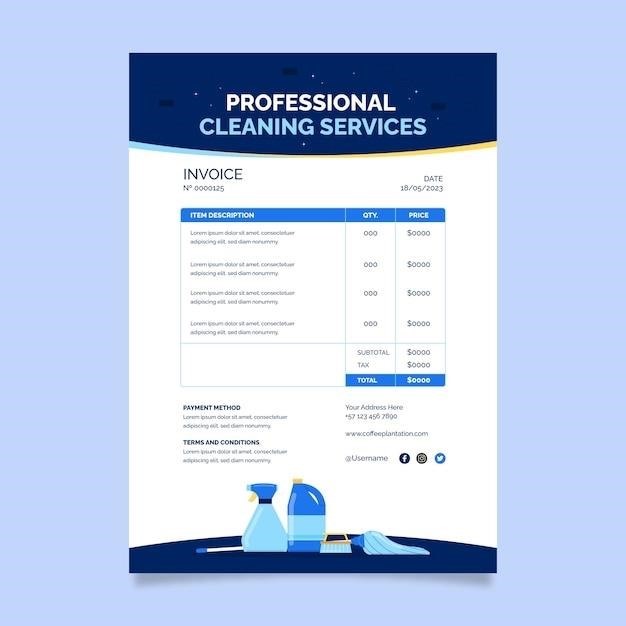Westinghouse WGen9500DFc Dual Fuel Portable Generator Manual
This comprehensive user manual provides detailed instructions on operating and maintaining the Westinghouse WGen9500DFc Dual Fuel Portable Generator with CO Sensor. It covers a wide range of topics, from safety precautions and assembly to troubleshooting and warranty information, ensuring you have the knowledge and resources to maximize the performance and longevity of your generator.
Introduction
Welcome to the Westinghouse WGen9500DFc Dual Fuel Portable Generator. This powerful and versatile generator is designed to provide reliable backup power for your home, business, or recreational activities. Whether you’re facing a power outage or simply need to power your tools and appliances on the go, the WGen9500DFc is a dependable solution.
This manual is your guide to understanding and operating your WGen9500DFc generator safely and effectively. It provides comprehensive information on all aspects of the generator, including safety precautions, assembly, operation, maintenance, troubleshooting, and warranty details.
Please take the time to read this manual carefully before using your generator. Understanding the instructions and guidelines outlined in this manual will help you ensure a safe and enjoyable experience with your Westinghouse WGen9500DFc Dual Fuel Portable Generator.
Key Features
The Westinghouse WGen9500DFc Dual Fuel Portable Generator boasts a range of features that make it a powerful and convenient power source.
- Dual Fuel Capability⁚ Operate on both gasoline and propane (LPG), offering flexibility and convenience.
- Powerful Output⁚ Delivers up to 12,500 peak watts and 9,500 running watts, providing ample power for a wide range of appliances and devices.
- Durable Engine⁚ Equipped with a heavy-duty 457cc 4-Stroke OHV Westinghouse Engine, ensuring long-lasting performance and reliability.
- Extended Run Time⁚ The 6.6-gallon (25 L) gas tank provides up to 12 hours of runtime, keeping you powered through extended outages.
- Easy Starting⁚ Push-button electric start makes it simple to start the generator, while a remote start key fob offers added convenience.
- Safety Features⁚ Includes a CO sensor for added safety, automatic low oil shutdown, and GFCI outlets.
These key features make the WGen9500DFc a dependable and user-friendly generator, ideal for a variety of power needs.
Technical Specifications
The Westinghouse WGen9500DFc Dual Fuel Portable Generator comes equipped with a range of technical specifications that contribute to its performance and functionality. Here’s a detailed breakdown⁚
- Engine⁚ 457cc, 4-Stroke OHV Westinghouse Engine
- Fuel Type⁚ Gasoline or Propane (LPG)
- Fuel Tank Capacity⁚ 6.6 gallons (25 liters) ─ Gasoline
- Run Time⁚ Up to 12 hours (Gasoline)
- Starting System⁚ Push-button Electric Start, Remote Start Key Fob
- Voltage⁚ 120/240V
- Frequency⁚ 60Hz
- Running Watts⁚ 9,500 Watts (Gasoline) ─ 8,500 Watts (Propane)
- Peak Watts⁚ 12,500 Watts (Gasoline) ─ 11,200 Watts (Propane)
- Outlets⁚ Four 120V household outlets, one 120/240V twist lock outlet, one 120/240V 50A RV outlet
- Dimensions⁚ 26.5″ L x 21.5″ W x 22.5″ H (67.3 cm x 54.6 cm x 57.2 cm)
- Weight⁚ 198 lbs (90 kg)
These specifications highlight the generator’s capabilities and provide a comprehensive understanding of its technical features.
Operating Modes
The Westinghouse WGen9500DFc Dual Fuel Portable Generator offers versatility with its dual fuel capabilities, allowing you to choose the most suitable fuel source for your needs. The generator seamlessly transitions between gasoline and propane (LPG) operation, ensuring a continuous power supply.
- Gasoline Mode⁚ This mode utilizes the generator’s gasoline tank and provides a peak wattage output of 12,500 watts and a running wattage output of 9,500 watts. The gasoline mode offers a longer run time of up to 12 hours, making it ideal for extended power outages.
- Propane Mode⁚ The propane mode utilizes a compatible LPG cylinder (not included) and provides a peak wattage output of 11,200 watts and a running wattage output of 8,500 watts. While the propane mode offers a slightly lower wattage output compared to gasoline mode, it provides a convenient alternative fuel source, especially if gasoline is unavailable or difficult to obtain.
The generator’s fuel selector switch allows for easy switching between gasoline and propane modes. The switch is conveniently located on the control panel, enabling you to transition between fuel sources without interrupting power output;
Safety Precautions
The Westinghouse WGen9500DFc Dual Fuel Portable Generator is a powerful and versatile tool, but it’s essential to prioritize safety during operation. This section outlines crucial precautions to ensure the well-being of you and those around you.
- Carbon Monoxide Hazard⁚ Generator exhaust contains high levels of carbon monoxide (CO), an invisible, odorless, and deadly gas. Never operate the generator indoors, in enclosed spaces, or near windows or doors. Ensure adequate ventilation by operating the generator outdoors in a well-ventilated area.
- Fire and Explosion Hazard⁚ Both gasoline and propane are highly flammable. Avoid using the generator near open flames, heat sources, or flammable materials. Keep the generator away from dry grass, leaves, or other combustible substances. Exercise caution when handling fuel and ensure proper storage.
- Electrical Safety⁚ Always disconnect the generator from the power source before performing any maintenance or repairs. Use caution when connecting electrical appliances and tools to the generator outlets, ensuring that the wattage requirements do not exceed the generator’s capacity.
- Hot Surface Warning⁚ The generator’s engine and exhaust system generate significant heat. Avoid touching these areas to prevent burns. Keep children and pets away from the generator while it is in operation.
- Proper Grounding⁚ Always use a properly grounded extension cord when connecting the generator to appliances. Grounding protects against electrical shock and ensures safe operation.
By adhering to these safety precautions, you can minimize risks and ensure a safe and enjoyable experience with the Westinghouse WGen9500DFc Dual Fuel Portable Generator.
Assembly and Setup
Setting up your Westinghouse WGen9500DFc Dual Fuel Portable Generator is a straightforward process. Follow these steps to ensure a smooth and safe installation⁚
- Unpacking and Inspection⁚ Carefully unpack the generator from its carton. Ensure all components are present and in good condition. Check for any damage or missing parts.
- Location Selection⁚ Choose a level, stable surface for the generator. Ensure the area is well-ventilated and free from obstructions. Keep the generator away from flammable materials and sources of heat.
- Engine Oil⁚ Before starting the generator, add the recommended engine oil to the oil fill/dipstick. Use a funnel to avoid spills. Refer to the manual for the correct type and quantity of oil.
- Fuel Tank⁚ Fill the gasoline tank with clean, fresh gasoline. Do not use fuel blends containing more than 10% ethanol. Refer to the manual for the correct type of fuel and fill level.
- Propane Connection (Optional)⁚ If using propane, connect the propane hose to the generator and the propane tank. Ensure the connection is secure and leak-free. Refer to the manual for specific instructions on propane setup.
- Electrical Connections⁚ Connect the generator to your electrical appliances or devices using properly grounded extension cords. Ensure the total wattage of connected appliances does not exceed the generator’s capacity.
Once assembled and connected, you are ready to start and operate your Westinghouse WGen9500DFc Dual Fuel Portable Generator.
Starting and Running the Generator
Starting and running your Westinghouse WGen9500DFc Dual Fuel Portable Generator is a simple process. Follow these steps to ensure a smooth and safe operation⁚
- Fuel Selection⁚ Choose your desired fuel source – gasoline or propane. If using propane, ensure the tank valve is open and the hose is securely connected.
- Battery Switch⁚ Turn the battery switch to the “ON” position. This activates the generator’s electrical system.
- Electric Start⁚ Press the push-button START/STOP button. The engine will crank and start. If the engine does not start after a few seconds, release the button and try again.
- Warm-Up⁚ Allow the generator to run for a few minutes to warm up the engine. This ensures optimal performance.
- Load Management⁚ Gradually connect your appliances and devices to the generator. Avoid overloading the generator by exceeding its wattage capacity.
- Monitoring⁚ Regularly monitor the generator’s operation, including the fuel gauge, engine temperature, and voltage output; If any issues arise, consult the troubleshooting section of the manual.
- Shutting Down⁚ When finished, turn off the appliances and devices connected to the generator. Then, press the START/STOP button to shut off the engine. Allow the generator to cool before storing or transporting.
Remember to consult the user manual for detailed instructions and safety precautions related to starting, operating, and shutting down your Westinghouse WGen9500DFc Dual Fuel Portable Generator.
Fuel Requirements
The Westinghouse WGen9500DFc Dual Fuel Portable Generator is designed to operate on both gasoline and propane (LPG). Understanding the fuel requirements is crucial for optimal performance and safety.
Gasoline
- Recommended Fuel⁚ Use unleaded gasoline with an octane rating of 87 or higher. Avoid using E15 or E85 ethanol blends, as they can damage the engine.
- Fuel Storage⁚ Store gasoline in a clean, approved container in a well-ventilated area, away from heat and open flames. Use fuel stabilizer to prevent fuel deterioration.
- Fuel Freshness⁚ Avoid using gasoline that is more than 30 days old, as it can degrade and cause engine problems.
- Fuel Tank Capacity⁚ The generator has a 6.6-gallon (25 L) gasoline tank, providing up to 12 hours of run time.
Propane (LPG)
- Propane Cylinder Requirements⁚ Use a properly sized and labeled propane cylinder that meets the applicable safety standards. Ensure the cylinder is in good condition and does not show signs of damage.
- Propane Hose Connection⁚ Connect the propane hose securely to the generator and the cylinder. Check for leaks before starting the generator.
- Propane Cylinder Valve⁚ Always turn the propane tank valve to the fully closed position when not running the generator on propane.
For detailed information on fuel requirements, consult the owner’s manual for your Westinghouse WGen9500DFc Dual Fuel Portable Generator.

Generator Outlets and Connections
The Westinghouse WGen9500DFc Dual Fuel Portable Generator features a variety of outlets to accommodate different devices and appliances. Understanding the different outlet types and their connections is essential for safe and efficient operation.
Outlet Types
- Household Outlets⁚ The generator includes four 120V household outlets (NEMA 5-20R), providing standard power for everyday appliances and electronics.
- RV Outlet⁚ A 120/240V 50A RV outlet (NEMA TT-30R) is provided for connecting to recreational vehicles or larger appliances requiring higher power.
- Twist Lock Outlet⁚ A 120/240V 30 amp twist lock outlet (NEMA 14-30R) offers a secure and reliable connection for heavy-duty appliances.
Connection Tips
- Proper Plugs⁚ Use the correct plugs and cords for each outlet type. Avoid overloading the generator by connecting too many devices.
- Grounding⁚ Ensure that all electrical connections are properly grounded to prevent electrical shock.
- Extension Cords⁚ Use extension cords only when necessary and choose cords with the appropriate gauge and length for the device being powered.
- Safety⁚ Always disconnect devices from the generator before making any adjustments or repairs.
Refer to the owner’s manual for your Westinghouse WGen9500DFc Dual Fuel Portable Generator for detailed instructions on connecting devices to the generator outlets.
Maintenance and Troubleshooting
Regular maintenance is crucial for ensuring the optimal performance and longevity of your Westinghouse WGen9500DFc Dual Fuel Portable Generator. By adhering to the recommended maintenance schedule, you can prevent potential issues and maximize your generator’s reliability.
Maintenance Schedule
- Oil Change⁚ Change the engine oil every 25 hours of operation or after 3 months, whichever comes first. Use the specified oil type and viscosity as recommended in the owner’s manual.
- Air Filter⁚ Clean or replace the air filter every 25 hours of operation or as needed. A dirty air filter can restrict airflow and reduce engine performance.
- Spark Plug⁚ Inspect and clean or replace the spark plug every 100 hours of operation. A worn or fouled spark plug can hinder starting and affect engine performance.
- Fuel System⁚ Regularly check the fuel lines and connections for leaks or damage. Use fresh fuel and avoid storing fuel for extended periods.
- Generator Components⁚ Inspect the generator components, including the alternator, wiring, and connectors, for any signs of wear or damage.
Troubleshooting
If you encounter any issues with your generator, refer to the troubleshooting section in the owner’s manual for common problems and solutions. If you are unable to resolve the issue, contact Westinghouse customer service for assistance.
Always prioritize safety when performing maintenance or troubleshooting tasks. Disconnect the generator from the power source and allow it to cool completely before working on it.
Storage and Transportation
Proper storage and transportation practices are essential for preserving the functionality and lifespan of your Westinghouse WGen9500DFc Dual Fuel Portable Generator. Follow these guidelines to ensure your generator remains in top condition when not in use.
Storage
- Clean and Dry⁚ Before storing, thoroughly clean the generator, removing any debris or dirt. Ensure it is completely dry to prevent corrosion.
- Fuel Tank⁚ Empty the fuel tank to avoid fuel degradation and potential damage; If you plan to store the generator for an extended period, consider adding a fuel stabilizer to prevent fuel deterioration.
- Engine Oil⁚ Change the engine oil before storage, as old oil can become acidic and damage engine components.
- Secure Location⁚ Store the generator in a cool, dry, and well-ventilated location, preferably indoors. Protect it from direct sunlight, moisture, and extreme temperatures.
- Cover⁚ Cover the generator with a breathable cover designed for outdoor power equipment to shield it from dust and moisture.
Transportation
- Secure Transport⁚ Use a sturdy and secure method for transporting the generator, such as a trailer or a pickup truck bed. Ensure it is properly secured to prevent movement or damage during transport.
- Fuel Tank⁚ Empty the fuel tank before transporting the generator to minimize the risk of spills or leaks.
- Handle with Care⁚ Handle the generator with care, avoiding dropping or bumping it. Use lifting straps or a dolly to move the generator to prevent strain or injury.
By following these storage and transportation recommendations, you can ensure your Westinghouse WGen9500DFc Dual Fuel Portable Generator remains in excellent working order for years to come.
Warranty Information
Westinghouse stands behind the quality and reliability of its products, including the WGen9500DFc Dual Fuel Portable Generator. To ensure your peace of mind, this generator is backed by a comprehensive warranty that covers defects in materials and workmanship under normal use and service. This warranty is designed to protect you against unexpected issues and ensure your generator performs as expected.
The specific terms and conditions of the warranty, including the duration and coverage, can be found in the warranty documentation that came with your generator; It is essential to carefully review these documents to understand the full scope of your warranty protection. If you have any questions or concerns regarding the warranty, please contact Westinghouse customer service directly. They can provide detailed information and assistance with any warranty-related inquiries.
To ensure your warranty remains valid, it is important to adhere to the recommended maintenance schedule outlined in this user manual. Proper maintenance helps ensure the generator functions correctly and reduces the likelihood of warranty-related issues. In the event of a warranty claim, be sure to retain your original purchase receipt as proof of purchase. This document will be required to process your claim effectively.









